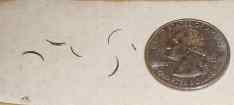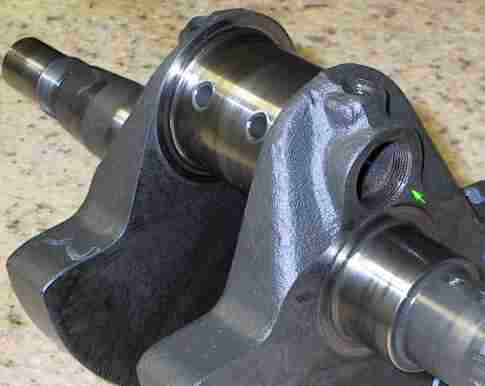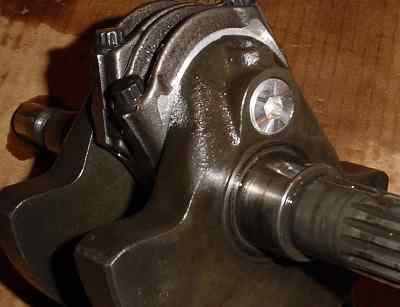A Ducati engine has a filter to remove microscopic and larger particles from the circulating oil, a magnet on the oil drain plub to remove any particles of magnetic material such as iron and steel, and has a removable mesh screen to capture larger non-magnetic metals such as aluminum and chromium as well as other non-metals such as gasket material. Each time you change your oil you should check your engine’s heath by examining them for any unusual amounts of material. This is probably the best reason to change your own oil.
If you've ever seen metal being machined, you'll know that metal chips and machining oil gets everywhere. The finished part is always then sent to a cleaning operation where most of the chips are flushed out of all the tiny crevices. But there's ALWAYS some particles left in complex shapes with internal oil and water passages such as an engine casing. That's why you have both a oil screen for big particles and an oil filter for small ones.
So, seeing a larger number of particles on your drain magnet and oil screen should be expected for the first few oil changes, and then seen to decrease over time unless there’s a problem. Here’s a way to diagnose problems.
Drain Plug Magnet 
It’s common to see fingernail-clipping size magnetic particles from normal transmission gear wear. Anythine larger should be a concern. Fuzz-like smaller particles on the plug are from normal wear of scores of moving parts, so they should be expected.
Oil Screen Since it’s normal to see aluminum particles from machining operations show up initially on the screen filter, it’s important to know about common problems with Ducati engines that also result in particles on the oil screen.

Paul Yoshimune photo

70cuda Photo
The first problem is that the oil galley plug on pre-2001 model year engines were made of aluminum and would unscrew causing a catastrophic loss of oil pressure that results in big-end bearing failure.
When the plug backs out, it backs into the outer race of the left side crankshaft bearing. The race, being much harder than the aluminum, basically machines down the plug a little at a time until the sliver of the plug drops into the crankcase of the motor and the oil pressure light comes on. At that point, the oil pressure is used to pump the oil through the crankshaft and no oil gets to the rod bearings, crank bearings, or upper end of the motor - because those places all require oil under pressure.
In 2001 steel plugs were introduced that solved this problem but if you have an earlier bike you need to watch for an unusual amount of aluminum particles on the screen. If you spot it in time, you can split the engine case and replace the plug before there is any subsequent damage. It takes awhile for the plug to machine itself off and back-out completely.
To confirm the problem you need to remove the vertical cylinder, pull up on the connecting rod, and look to the left of the rod. If there's a dull silver part of the crankshaft touching the outer race of the crankshaft bearing, you got the problem. The plug should be flush or slightly inset.
The second problem is the design problem with the chrome plating flaking-off the cam-contacting surface of the rocker arms. The best way to know if you have rocker problems is to pull the cams and look, but your dealer won't do this unless you authorize an additional labor charge. Chrome particles on the filter screen will give you a good reason to spend the money to have them do this.
Chrome and aluminum are non-magnetic so they don’t attach themselves to the magnet on the drain plug. So how do you tell if you have chrome or aluminum particles on your filter screen? Here’s a simple test.
The Test Draw a small amount of battery acid and put the particles in it. Battery acid is dilute sulfuric acid, so when you add chromium to it you’ll get a release of hydrogen bubbles and the chromium will turn the darker violet color of chromium sulfate. Aluminum doesn’t react this way.
For you chemistry majors:
2Cr + 3H2SO4 > Cr2 [SO4]3 + 3H2
[Edited on 7-22-2005 by Shazaam!]